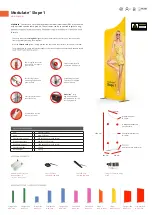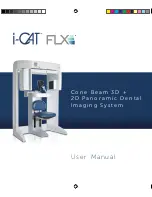
HOW THE SPACEXPANDER WORKS
The Spacexpander, a result of many years of research and design is an electro-mechanical device.
It is separated into two major sections - an amplifier (Electronics Chassis) and a mechanical
transducer (the Reverberation Chassis). The control Unit is, electrically, part of the amplifier.
The amplifier is not really an amplifier - because
of the losses in the isolation networks and the
Reverberation Chassis the overall gain (between
inputs and outputs) is about 1. All the amplifier
does is make up for the losses The volume control
setting of your home music system should be set to
just about the same setting whether the
Spacexpander is connected to the jacks or the
jumpers are in place.
The heart of the Spacexpander is the
Reverberation Chassis. It is here that the delay,
echoes and decay are generated they simulate the
echoes of a well-designed auditorium. A small
amount of the signals at the INPUT jacks (see block
diagram) are fed to V1 through the isolation
networks.
The output of V1 goes to the input of the
reverberation transducer. Here the electrical
signals are converted into a twisting, semirotary
mechanical motion. The movement of the
magnetic rods is transmitted along the springs.
The springs are not identical the wire sizes are not the same and the number of turns-to-theinch
are different too. Because of these differences, the motion produced by the magnetic rods takes 29
milliseconds (0.029 sec.) to reach the output end of one spring and 37 milliseconds to reach the
output end of the other. Here, the movement of the magnetic rods generates a very weak
reverberated signal which goes to an amplifier stage (V2) to be made stronger. Some of the
mechanical motion goes back along the springs. One echo returns to the starting point 58
milliseconds after it started and the other, traveling slower, returns to its input magnetic rod after
74 milliseconds (one millisecond is only 1/1000 of a second, remember). Again the rotational
mechanical motion, weaker than it was when it first started, heads for the output transducer These
second echoes arrive at the output transducer (and the output of V3) some 87 and 111 milliseconds
after the pure, original signal went through V3.
From one sound we have had five signals at the output jacks. The first echo of the original, pure
signal appeared 29 milliseconds later; another 37 milliseconds, a third after 87 milliseconds, a
fourth, after 111 milliseconds. Of course the mechanical reflections do not just stop after two
echoes (signals) have appeared at the output transducers - they continue, back and forth, getting
weaker each time until they cannot be heard. The number of reflections (echoes) heard will
depend on the setting of the Control Unit knob and the loudness of the original sound at the input
to the Spacexpander.
TROUBLESHOOTING GUIDE
NO REVERBERATION monophono only. If there is no reverberation (or much less than usual)
when listening to a monophonic record played with a stereo phonograph cartridge just reverse
the leads (for one channel only) where they attach to the terminals at the rear of the cartridge
inside the tone arm.
FEEDBACK-If the home music system moans, squeals or whistles whenever the Control Unit knob
is turned slightly clockwise the Reverberation Chassis is either too close to the speakers or the
shock mount assembly has been over tightened (If this occurs after the Spacexpander has been
operating satisfactorily for some time it may indicate that the rubber has lost its resilience due to































